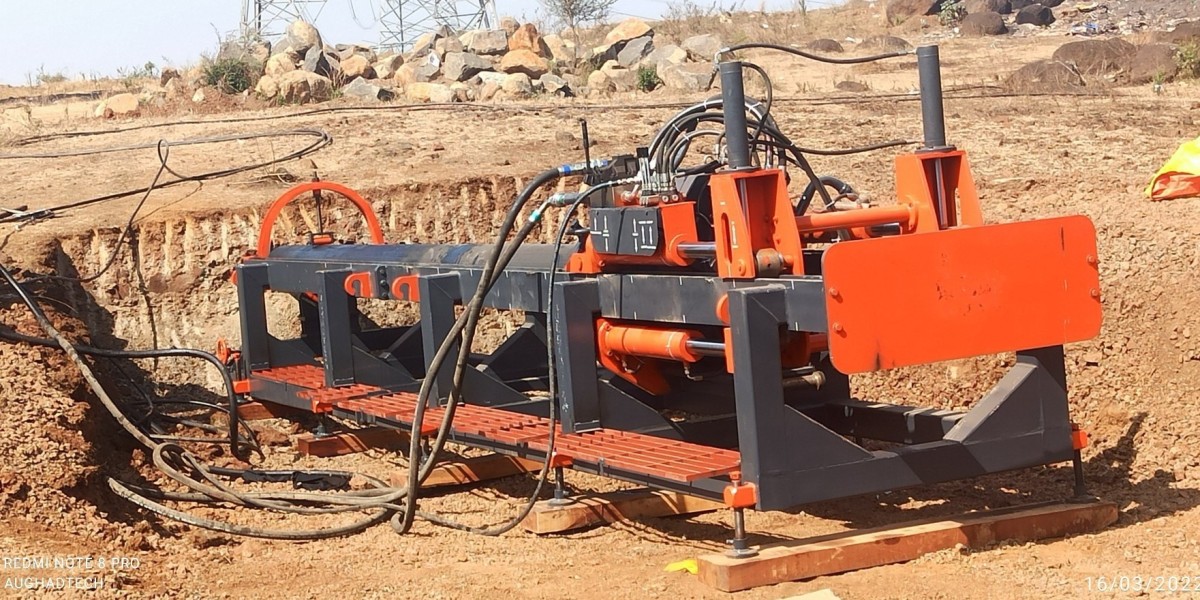In today’s construction world, underground utility installation has become more advanced and efficient. One of the most reliable methods for installing pipelines and conduits under roads, railways, and other obstacles is trenchless technology. Among the many machines used in this field, the horizontal auger boring machine stands out as one of the most dependable and effective solutions.
This article will explain what a horizontal auger boring machine is, how it works, and the top benefits of using it in trenchless projects.
What Is a Horizontal Auger Boring Machine
A horizontal auger boring machine is a powerful piece of equipment used to bore precise holes underground without the need for open trenches. It is designed to push a casing pipe while simultaneously removing soil with a rotating auger inside the casing. This process creates a smooth, stable bore that can be used to install pipelines for water, gas, electricity, or communication lines.
The machine is usually set up in a pit, and it pushes horizontally through the ground to create a bore of the required diameter and length. Its strength lies in its ability to install large-diameter pipes safely beneath roads, railways, and structures while minimizing surface disruption.
Why Trenchless Projects Need a Horizontal Auger Boring Machine
Trenchless projects aim to install underground utilities without disturbing the ground surface too much. Traditional open-cut methods require digging large trenches, which can cause traffic disruptions, safety hazards, and high restoration costs.
By using a horizontal auger boring machine, contractors can install pipelines efficiently and safely while keeping the surface almost untouched. This makes it an essential choice for projects in busy urban areas or locations where digging is not practical.
Top Benefits of Using a Horizontal Auger Boring Machine
1. Minimal Surface Disruption
One of the biggest advantages of using a horizontal auger boring machine is the minimal disturbance it causes to the surface. Roads, sidewalks, and railways remain intact while the boring is done underground. This reduces traffic delays and avoids costly surface repairs.
2. High Accuracy and Precision
A horizontal auger boring machine can create straight and accurate bores. This precision ensures that pipelines are installed exactly where they are needed, avoiding misalignment or damage to existing utilities. For trenchless projects, accuracy is very important because underground space is often crowded with cables and pipes.
3. Cost Savings in the Long Run
While the initial setup of a horizontal auger boring machine may require investment, the overall project costs are often lower compared to open-cut methods. The reason is simple: there is no need for large excavation, less restoration work is required, and the project can be completed faster. These savings make it a cost-effective choice for many contractors.
4. Time Efficiency
Time is one of the most important factors in construction. The horizontal auger boring machine can complete bores quickly compared to traditional trenching. Faster installation means contractors can take on more projects and meet deadlines more easily. For municipalities and utility companies, reduced project time also means less disruption to the public.
5. Ability to Handle Large Diameters
Unlike some trenchless machines that are limited to small pipes, a horizontal auger boring machine is capable of installing large-diameter casing pipes. This makes it suitable for major infrastructure projects, such as water mains, sewer lines, or industrial pipelines.
6. Strong Performance in Different Soil Conditions
Soil conditions vary from project to project. The horizontal auger boring machine is designed to handle a wide range of soils, from soft clay to compact sand and gravel. With the right setup, it can even manage challenging conditions, making it a versatile choice for contractors.
7. Reduced Environmental Impact
Open-cut excavation often damages the environment by disturbing topsoil, trees, and natural habitats. By using a horizontal auger boring machine, the impact on the environment is much smaller. Only entry and exit pits are required, leaving most of the ground undisturbed.
This makes it a preferred option for projects near parks, rivers, or other environmentally sensitive areas.
8. Improved Safety for Workers and Public
Construction safety is always a priority. With traditional trenching, deep excavations can pose risks such as cave-ins or accidents involving heavy equipment. A horizontal auger boring machine reduces these risks because most of the work is done from a pit.
Since there is less surface activity, the public is also safer from construction hazards.
9. Long-Term Reliability
Bores created with a horizontal auger boring machine are stable and well-supported. This reduces the chances of ground collapse or pipe damage after installation. As a result, the installed utilities have a longer lifespan and require less maintenance, which adds to the overall reliability of the project.
10. Flexibility for Different Applications
The horizontal auger boring machine is used in many types of trenchless projects, including:
Installing water and sewer lines
Laying gas pipelines
Placing electric or communication conduits
Crossing roads, highways, or railways
Industrial pipeline installation
This flexibility makes it one of the most valuable machines in trenchless technology.
Comparing Horizontal Auger Boring with Other Trenchless Methods
There are other trenchless methods like horizontal directional drilling (HDD) and microtunneling. While each method has its advantages, the horizontal auger boring machine is preferred for certain cases, especially when straight, large-diameter bores are required.
HDD is often used for curved paths and smaller pipes, while auger boring is known for its reliability in straight-line installations. This makes auger boring the go-to option for utility crossings under roads and railways.
Best Practices for Operating a Horizontal Auger Boring Machine
To get the most benefits from a horizontal auger boring machine, contractors should follow certain best practices:
Conduct proper site surveys before starting boring
Ensure the machine is set up on stable ground
Regularly inspect and maintain the auger and casing pipes
Train operators to handle the machine safely
Monitor soil conditions during boring to adjust as needed
By following these steps, the machine will perform efficiently and safely.
Conclusion
The horizontal auger boring machine has become an essential part of trenchless projects due to its accuracy, efficiency, and ability to handle large pipelines with minimal disruption. From reducing environmental impact to ensuring long-term reliability, the benefits of using this machine are clear.







